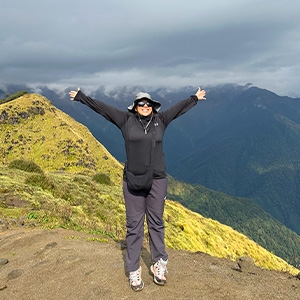Top 10 Places to Visit in Bhutan
Paro Taktsang- The Last Shangri-La
Paro Taktsang, also known as Tiger's Nest Monastery, is one of Bhutan's most iconic landmarks and a symbol of the spiritual heritage of Bhutan. Perched dramatically at an altitude of 3,120 meters, right on the edge of a cliff in Paro Valley, the Tiger’s Nest Monastery is believed to be where Guru Rinpoche (Padmasambhava) meditated in the 8th century. The monastery consists of several temples and meditation caves, all interconnected by staircases and narrow pathways.
Visitors can embark on a 2-3 hours challenging hike to reach Paro Taktsang, traversing through lush forests and enjoying panoramic views of the surrounding mountains. Upon reaching the monastery, visitors can explore its sacred halls, adorned with vibrant murals and intricate woodwork, and soak in the serene atmosphere of the site. The spiritual significance, coupled with its breathtaking location, makes Paro Taktsang a must-visit destination for travelers seeking a glimpse into Bhutan's mystical past.
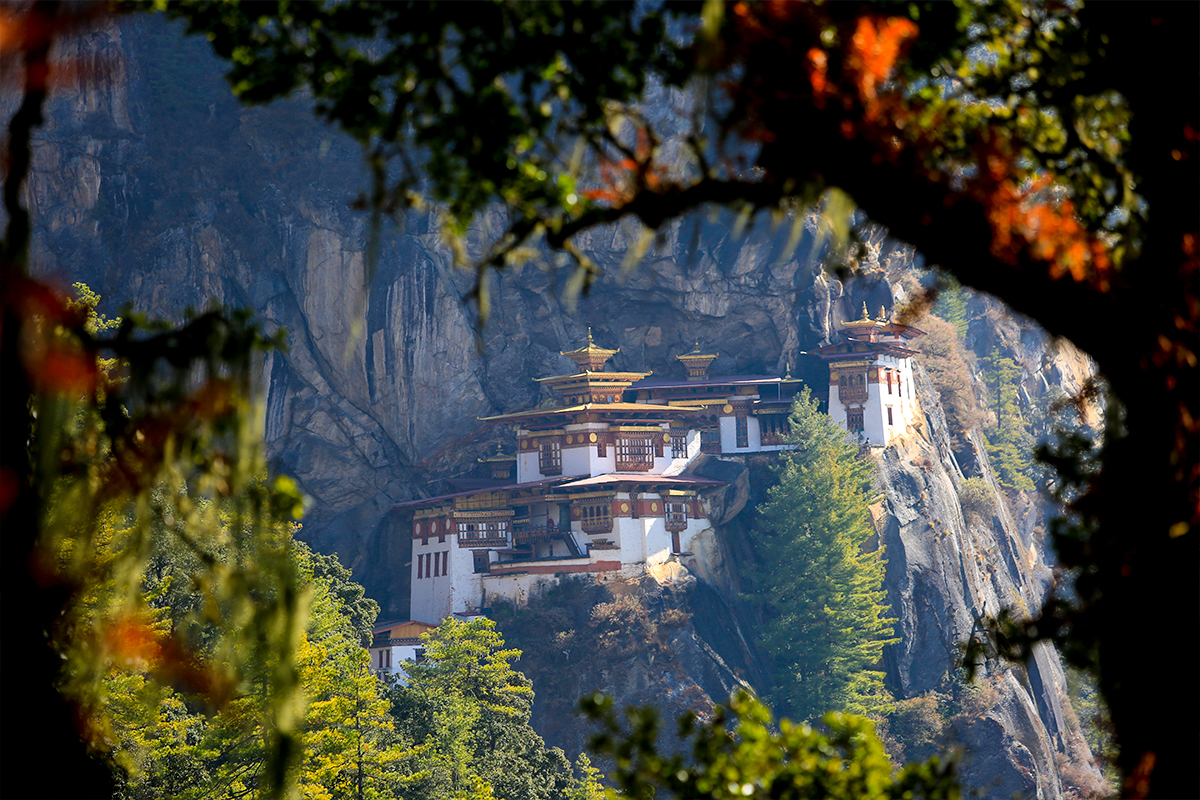
Punakha Valley- The lost capital of Bhutan
Punakha Valley, located at a lower altitude than many other parts of Bhutan, served as the capital of the country until 1955. Despite losing its status as the capital, Punakha remains a significant cultural, political, and historical center. The valley is renowned for its stunning landscapes, with terraced rice fields, fruit orchards, and the glistening waters of the Mo Chhu and Pho Chhu rivers.
At the heart of Punakha Valley lies Punakha Dzong, a majestic fortress monastery that served as the seat of government until the mid-20th century. Built in 1637, the dzong is renowned for its grandeur and architectural splendor, with whitewashed walls, golden spires, and intricate wood carvings.
Punakha Dzong plays a central role in Bhutanese religious and cultural life, hosting important ceremonies and festivals throughout the year. Beyond the dzong, Punakha Valley offers opportunities for scenic hikes, visits to traditional villages, and cultural encounters with local communities. The tranquil ambiance and stunning natural beauty of Punakha Valley make it a must-visit destination for travelers seeking to immerse themselves in Bhutan's rich cultural heritage.
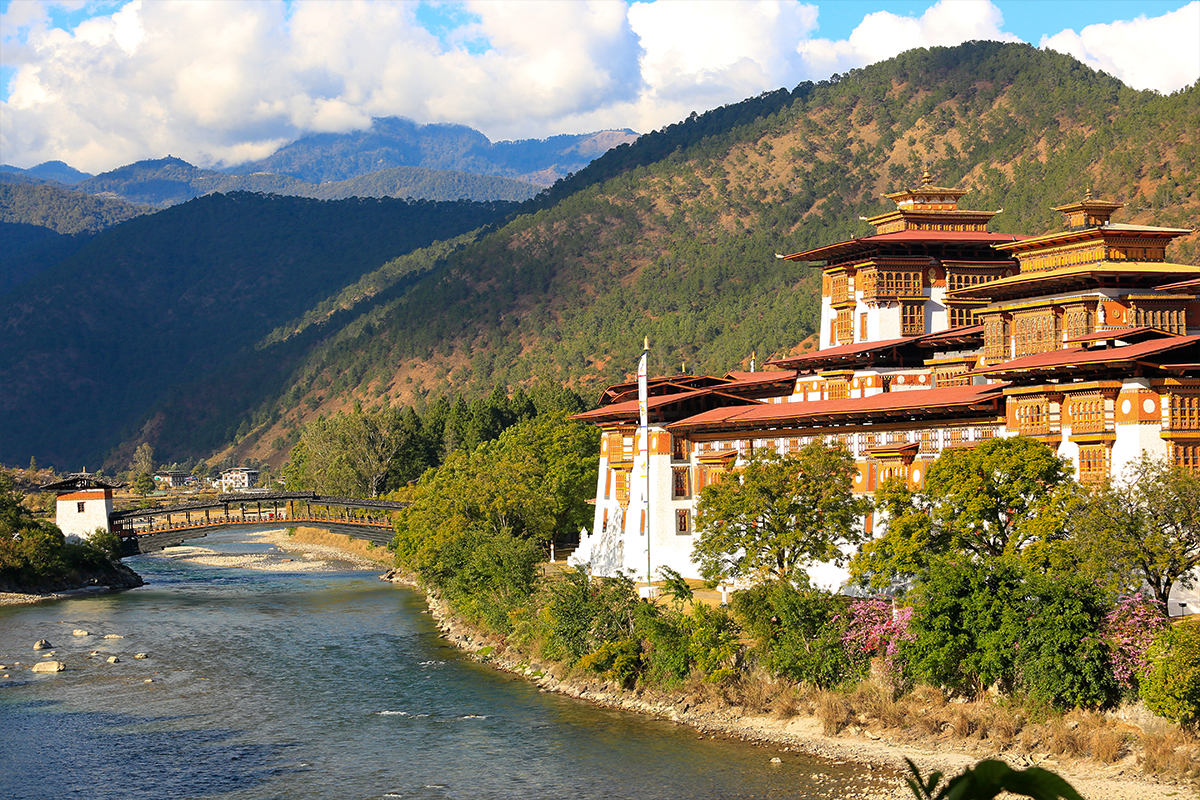
Thimphu- The Royal Capital
Thimphu, the capital city, is a vibrant blend of tradition and modernity, offering visitors a unique glimpse into the country's evolving identity. Despite being the largest city in Bhutan, Thimphu retains a sense of tranquility and charm, with its tree-lined streets, traditional architecture, and friendly atmosphere.
The capital city is home to several cultural and historical attractions, including the Tashichho Dzong, a grand fortress monastery that serves as the seat of the government and the King's administrative offices. Visitors can explore Thimphu's bustling markets, where the local craftsmen sell handmade crafts and local delicacies, and witness colorful festivals celebrating Bhutanese heritage. Additionally, Thimphu also offers opportunities for outdoor activities such as hiking, biking, and birdwatching in the surrounding hills and forests. Whether strolling through its vibrant streets or immersing oneself in its rich cultural tapestry, Thimphu invites visitors to experience the essence of Bhutanese life and hospitality.
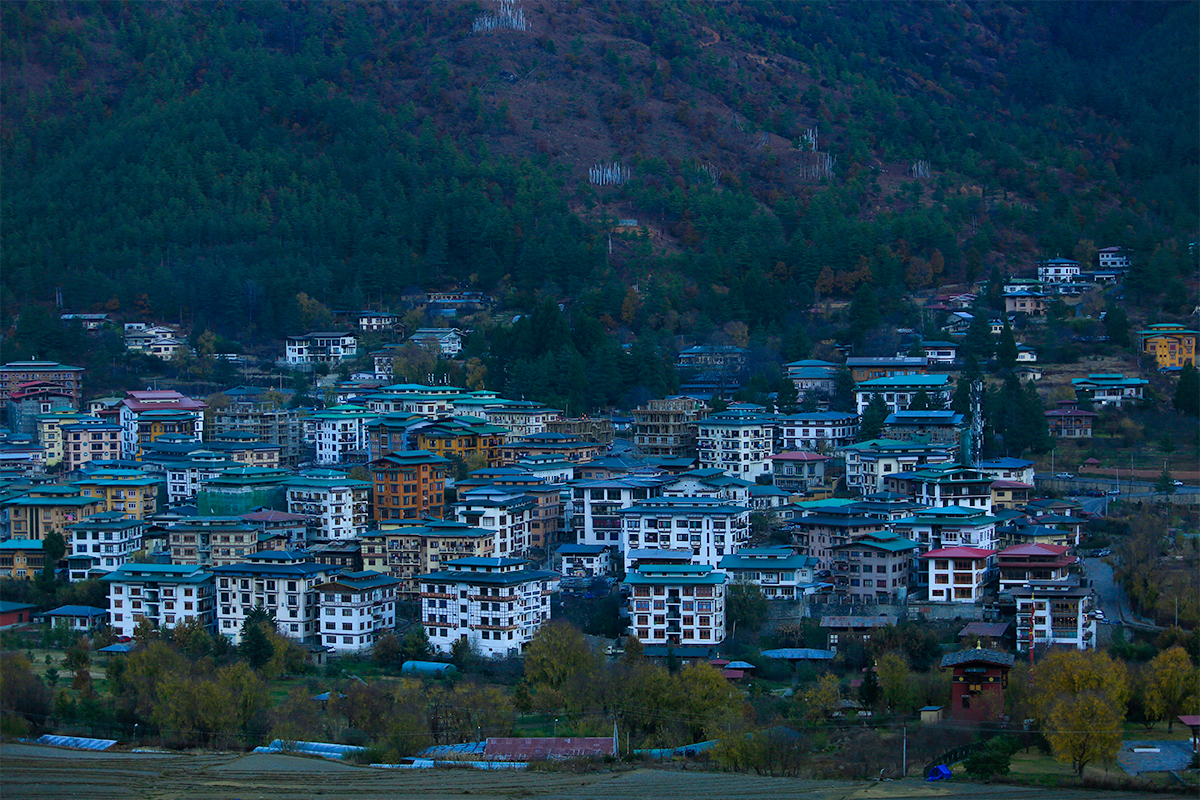
Dochula Pass
Dochula Pass, located on the road from Thimphu to Punakha, is a scenic mountain pass renowned for its panoramic views of the Himalayas. Situated at an altitude of 3,100 meters (10,200 feet), Dochula Pass offers visitors breathtaking sceneries of snow-capped peaks on clear days. The pass is adorned with 108 chortens (stupas), built in memory of Bhutanese soldiers who lost their lives in a conflict with insurgents.
In addition to its natural beauty, Dochula Pass holds religious significance, with the Druk Wangyal Chortens and a temple dedicated to the memory of the Fourth Druk Gyalpo (King). Travelers often stop at Dochula Pass to admire the stunning scenery, take photographs, and enjoy refreshments at the nearby cafeteria. The pass also serves as a popular location for religious ceremonies and festivals, adding to its cultural importance in the region. Whether en route to Punakha or simply seeking a tranquil retreat amidst the mountains, Dochula Pass offers a memorable and rejuvenating experience for visitors to Bhutan.
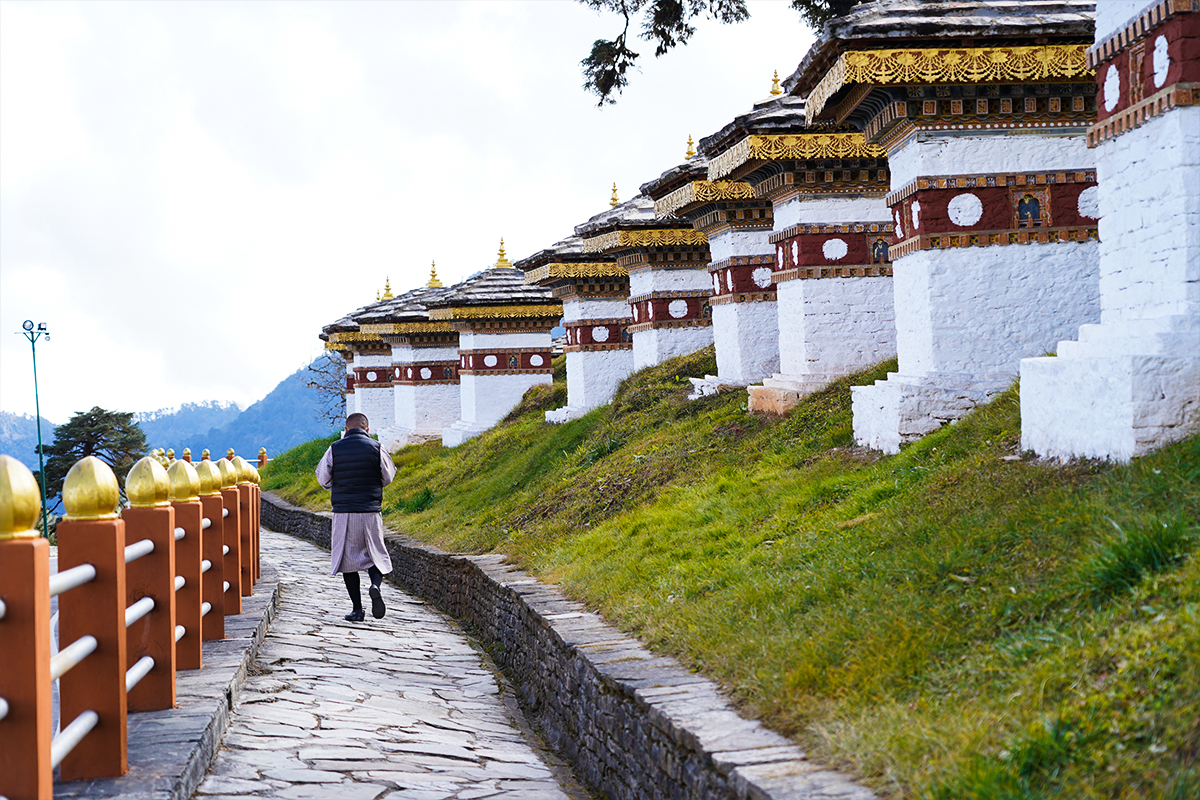
Phobjikha Valley- The Land of Black-Necked Cranes
Phobjikha Valley, nestled amidst the mountains of central Bhutan, is a pristine and ecologically significant region known for its natural beauty and the annual migration of the endangered black-necked cranes. Designated as a conservation area, Phobjikha Valley is home to the Gangtey Monastery, an important religious institution with panoramic views of the surrounding landscapes.
Each winter, hundreds of black-necked cranes migrate from Tibet to spend the season in the valley, drawing birdwatchers and nature enthusiasts from around the world. The arrival of the cranes is celebrated with the Black-Necked Crane Festival, which showcases traditional Bhutanese culture and raises awareness about conservation efforts. Beyond its ecological significance, Phobjikha Valley offers opportunities for scenic hikes, visits to traditional farmhouses, and cultural encounters with local communities. The valley's serene ambiance and breathtaking vistas make it a sanctuary for both wildlife and visitors seeking to reconnect with nature in the heart of the Himalayas.
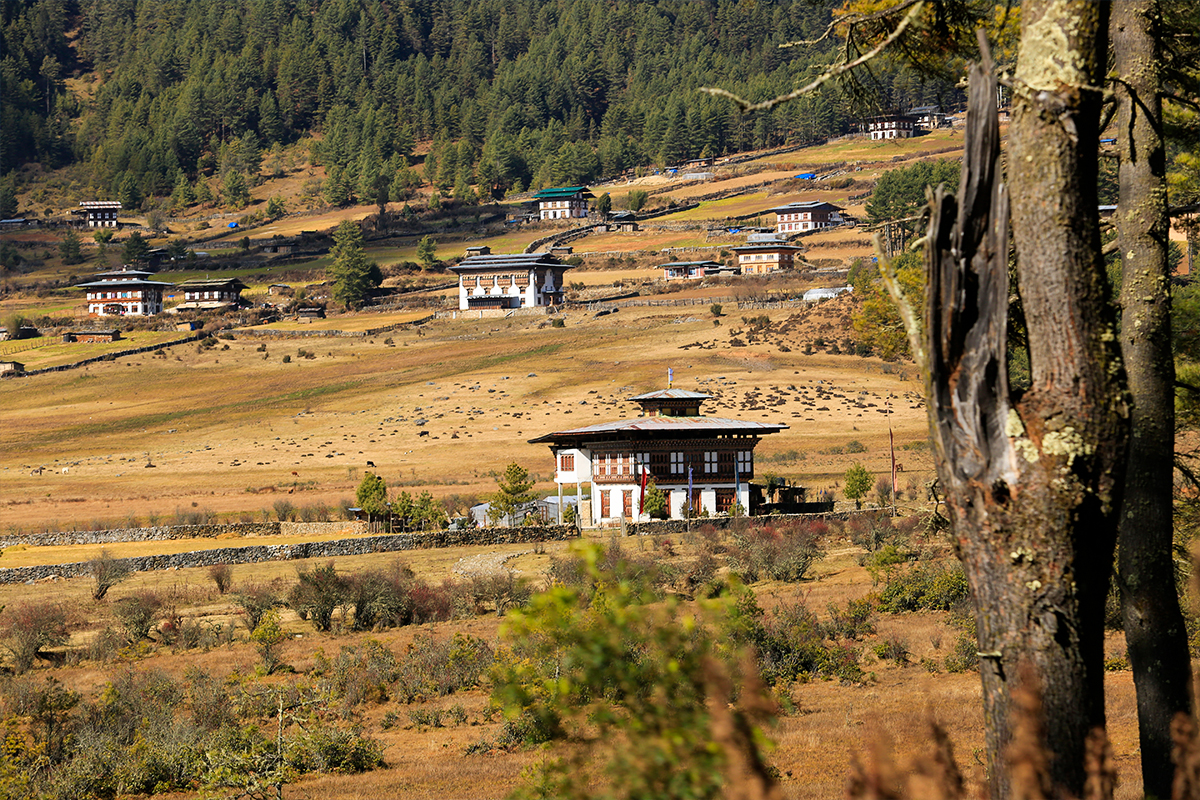
Bumthang-The Switzerland of Bhutan
Bumthang, located in central Bhutan, is a picturesque region renowned for its natural beauty, rich cultural heritage, and spiritual significance. Often referred to as the "Switzerland of Bhutan," Bumthang is characterized by lush valleys, alpine forests, and pristine rivers. The region is dotted with sacred temples, monasteries, and ancient pilgrimage sites, including the revered Jakar Dzong and the Kurjey Lhakhang, where Guru Rinpoche is said to have left his body imprint. Bumthang is also famous for its vibrant festivals, such as the Jambay Lhakhang Drup and the Kurjey Tshechu, which attract pilgrims and spectators from all over Bhutan.
Beyond its cultural attractions, Bumthang offers opportunities for outdoor activities such as trekking, birdwatching, and hot spring baths, allowing visitors to immerse themselves in the tranquility and spirituality of this sacred landscape. With its serene ambiance and cultural richness, Bumthang beckons travelers to explore its hidden treasures and experience the essence of Bhutanese heritage.
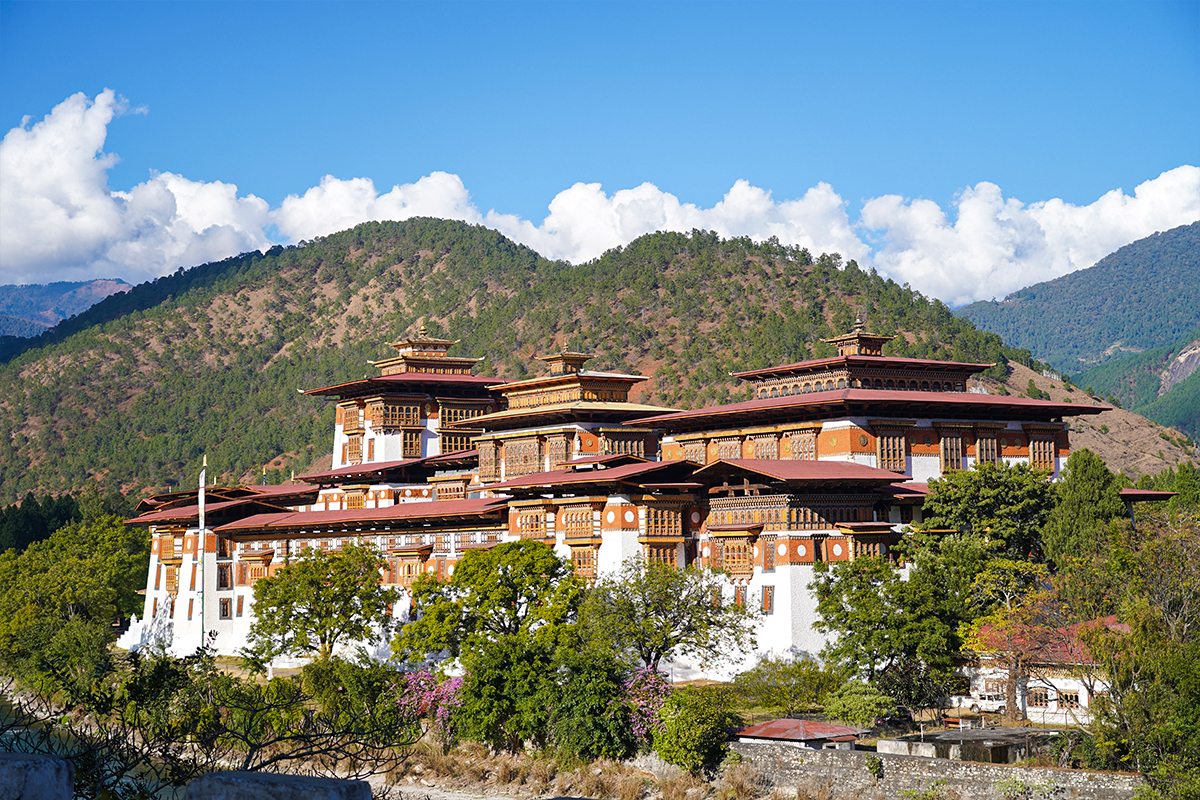
Phuentsholing- The Gateway to Bhutan
Phuentsholing, situated on the southern border with India, serves as the primary entry point for travelers entering Bhutan by road. As the gateway to the country, Phuentsholing offers a fascinating blend of Bhutanese and Indian cultures, with bustling markets, colorful temples, and vibrant street life. Visitors can explore other attractions such as the Zangto Pelri Lhakhang, one of the Most Beautiful Places in Bhutan. It is a temple dedicated to Guru Rinpoche, and the Amo Chhu Crocodile Breeding Centre, where endangered gharials are bred for conservation purposes. Phuentsholing also serves as a convenient stopover for travelers en route to other Top Travel Destinations in Bhutan, providing essential services such as hotels, restaurants, and transportation facilities. Despite its bustling atmosphere, Phuentsholing retains a sense of charm and hospitality, welcoming visitors with open arms to the enchanting kingdom of Bhutan.
Jigme Dori National Park- The Wild Side of the Himalayan Kingdom
Jigme Dorji National Park, named after the former king of Bhutan, is the largest protected area in the country and encompasses a diverse range of ecosystems, from subtropical forests to alpine meadows. This national park is home to a rich array of flora and fauna, including endangered species such as the snow leopard, Bengal tiger, and Himalayan black bear. Visitors to Jigme Dorji National Park can engage in a variety of outdoor activities, including trekking, wildlife spotting, birdwatching, and camping. The park's pristine wilderness and scenic beauty make it a paradise for nature enthusiasts seeking to explore the untamed landscapes of the Himalayas. With its network of hiking trails, remote mountain passes, and secluded valleys, Jigme Dorji National Park offers Unique Things To Do in Bhutan such as experiencing the wild side of the Himalayan kingdom and immersing oneself in the natural splendor of Bhutan.
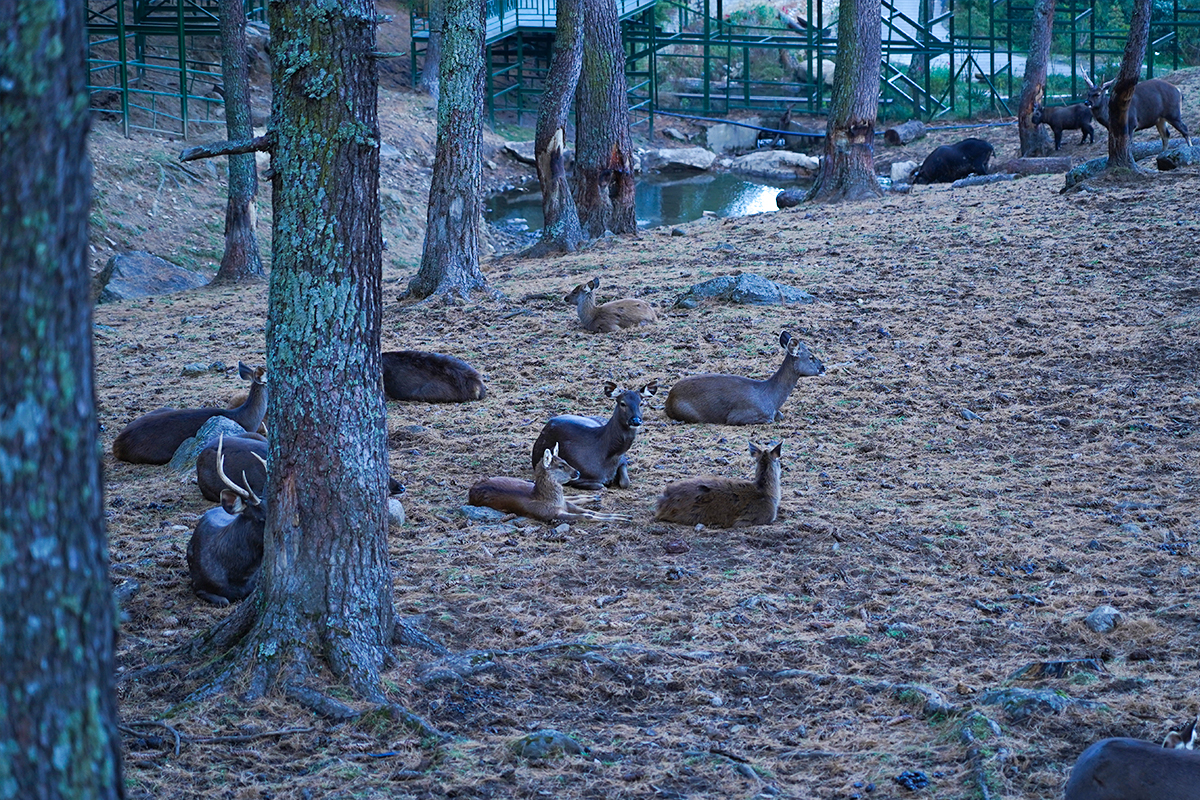
Trongsa- The Balcony of Bhutan
Trongsa, located in central Bhutan, holds great historical and cultural significance as the ancestral home of the royal family and the geographic center of the country. The town is dominated by Trongsa Dzong, a massive fortress monastery perched on a ridge overlooking the Mangde River. Trongsa Dzong is one of Bhutan's most impressive architectural marvels, with labyrinthine corridors, intricately carved woodwork, and stunning panoramic views of the surrounding valleys. The dzong has played a pivotal role in Bhutanese history, serving as the seat of power for generations of rulers and as a strategic stronghold along ancient trade routes. Visitors can explore the dzong's courtyards, temples, and museums, gaining insight into Bhutanese history and the role of the monarchy in shaping the nation's destiny. Trongsa's strategic location along the historic East-West Highway also makes it a fascinating stopover for travelers exploring the cultural heartland of Bhutan.
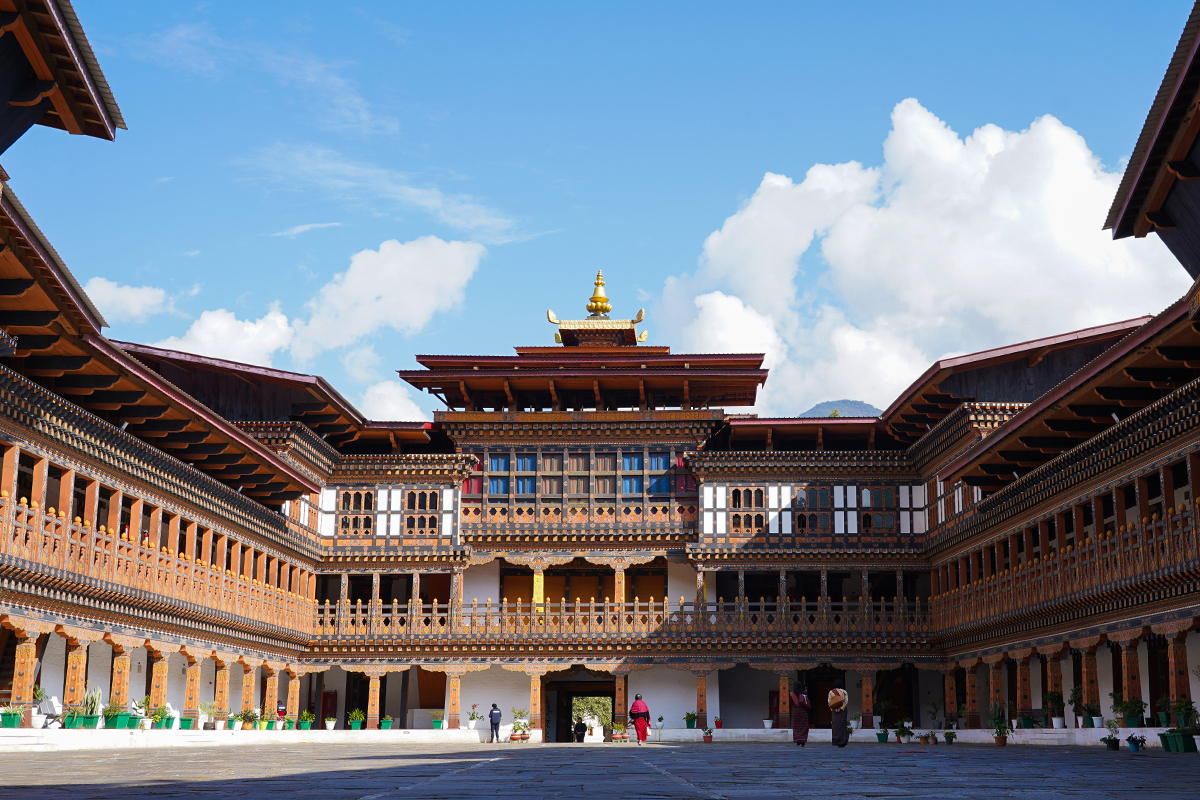
Gangtey Valley
Gangtey Valley, situated in the district of Wangdue Phodrang, is renowned for its natural beauty and cultural heritage. The valley is home to the picturesque Gangtey Monastery, also known as Gangtey Gonpa or Gangtey Sangacholing Gompa, which overlooks the expansive Phobjikha Valley. This monastery is one of the main seats of the Pema Lingpa tradition of Nyingmapa Buddhism in Bhutan.
Gangtey Valley is also famous for the annual Black-Necked Crane Festival, which celebrates the arrival of the endangered black-necked cranes to the valley during the winter months. Visitors to Gangtey Valley can enjoy scenic hikes, birdwatching, and cultural experiences, immersing themselves in the tranquility and spirituality of this pristine Himalayan landscape. With its serene ambiance and breathtaking vistas, Gangtey Valley offers a sanctuary for both wildlife and visitors seeking to reconnect with nature in the heart of the Himalayas.
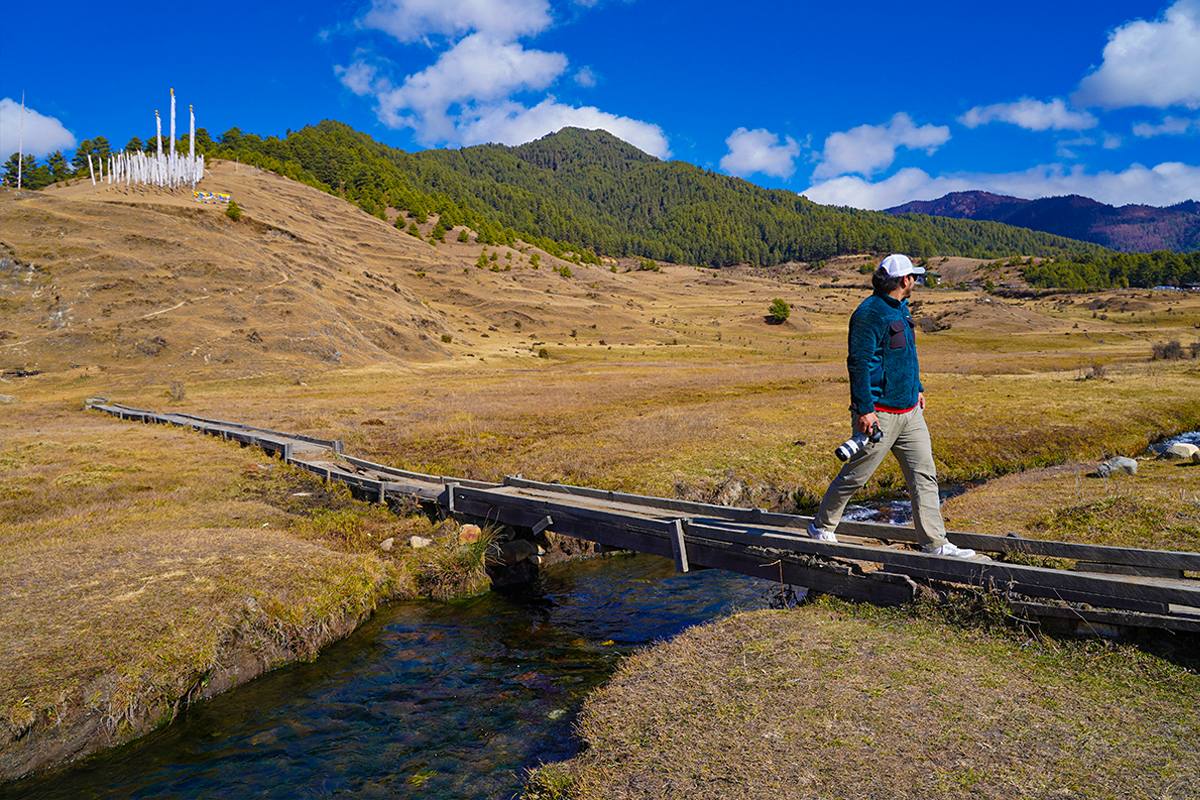
Conclusion
Ultimately, Bhutan stands as a mesmerizing destination, offering a unique blend of natural beauty, rich cultural heritage, and spiritual tranquility. From the awe-inspiring heights of Paro Taktsang to the serene valleys of Punakha and Phobjikha, each attraction welcomes travelers to immerse themselves in the mystical allure of the Last Shangri-La.
Whether exploring the bustling streets of Thimphu or traversing the rugged terrain of Dochula Pass and Jigme Dorji National Park, visitors are greeted with unparalleled vistas and profound experiences.
With every corner of the kingdom exuding charm and grace, it's no wonder that Bhutan captivates the hearts and souls of all who venture within its borders. Indeed, these top attractions in Bhutan showcase the country's breathtaking landscapes and architectural marvels and embody its enduring spirit of preservation, tradition, and harmony with nature.
You can reach out to Footprint Adventure to plan your upcoming journey to Bhutan and embark on an unforgettable adventure.











